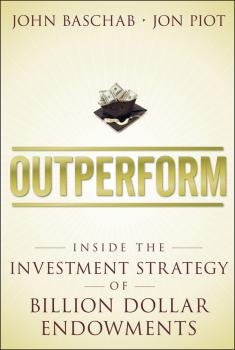ТОП просматриваемых книг сайта:
John Baschab
Список книг автора John BaschabАннотация
Spanning everything from legal firms and architects to fundraisers and dentists, the professional services industry continues to experience spectacular growth yet remains largely undocumented in business literature. Until now. The Professional Services Firm Bible is a sophisticated and comprehensive guide to running a highly productive professional services organization. Top consultants John Baschab and Jon Piot provide specific and sharply defined policies, practices and tools for each important aspect of managing the professional services firm, allowing you to assess current operations and develop a step-by-step plan for realising measurable productivity improvements. Further, the book will help you improve financial performance by managing costs, getting the most from external vendors and improving revenues. The Professional Services Firm Bible is full of best practices, proven advice and practical techniques and includes a CD-ROM with customizable tools every professional services firm can use to achieve improvements. Please visit www.iig1.com and www.impactinsights.com for more information on the book and top consultants John Baschab and Jon Piot.
Аннотация
The Executive's Guide to Information Technology is a sophisticated and comprehensive guide to running a cost-effective, efficient, and business delivery-focused corporate Information Technology (IT) unit. Eschewing the theoretical for the practical, the book gives managers the guidance they need to handle any problem effectively. It provides specific policies, approaches, and tools for each critical IT management functionó from application management to vendor management. IT management experts John Baschab and Jon Piot provide the techniques IT managers and executives need to accurately assess their current operations. Further, they offer a step-by-step improvement plan designed to raise productivity and service levels while reducing costs significantly. The authors begin by examining the symptoms and causes of waste, inefficiency and underperformance in typical IT departments before offering in-depth analysis of each operational area of IT management. They present current and emergent best practices for transforming the department into a world-class service organization. Packed with prescriptive advice and hard-earned insight, this comprehensive resource is organized into stand-alone chapters that provide quick access to important information when managers need it. In addition, spreadsheets, documents, and checklists are designed to aid in planning and decision-making and can be easily accessed on the included CD-ROM. Designed to help IT managers and top executives get the most out of their departments, their budget and themselves, the book covers such topics as: managing the department, establishing leadership roles, assessing the organization, cost management, project demand management, operations management, infrastructure planning, vendor selection and management, technical standards setting, investment evaluation, and productivity and quality measurement programs. With The Executive's Guide to Information Technology, IT managers will understand the main sources of waste in their departments, identify major management issues, learn and implement critical steps toward improvement, and manage more effectively. The book will help managers improve their performance and stature within their organizations by providing the tips and tools to overcome typical areas of friction and miscommunication between IT departments and other business functions. Executives will understand how to work effectively with the CIO or IT director, as well as provide constructive management input to the IT function, achieving the best return on their IT assets.
Аннотация
University endowment managers have generally outperformed the market benchmarks. However, their knowledge has not been well documented in any book. This book fills that gap and should be of significant help to all those who want to learn from extensive interviews with a number of endowment managers.—PREM JAIN, McDonough Professor of Accounting and Finance, Georgetown University Learn how higher education's largest endowments consistently achieve higher investment returns than the overall market. The Chief Investment Officers who oversee the top academic endowment funds manage over $400 billion in total assets. Over the last ten years (1999–2009), large endowments returned an average of 6.1%, compared to the S&P 500 index average of –2.22%, an outperformance difference of over 8%. With the recent sharp economic downturn, and a decade of inflation-adjusted flat returns in the overall equities market, institutional and individual investors alike are looking to endowments for proven strategies for improving the performance of their portfolios. Outperform: Inside the Investment Strategy of Billion Dollar Endowments interviews top CIOs from leading endowments, to detail how they consistently outperform the market, what they predict for the coming years, and how small investors can employ their investment philosophies.



